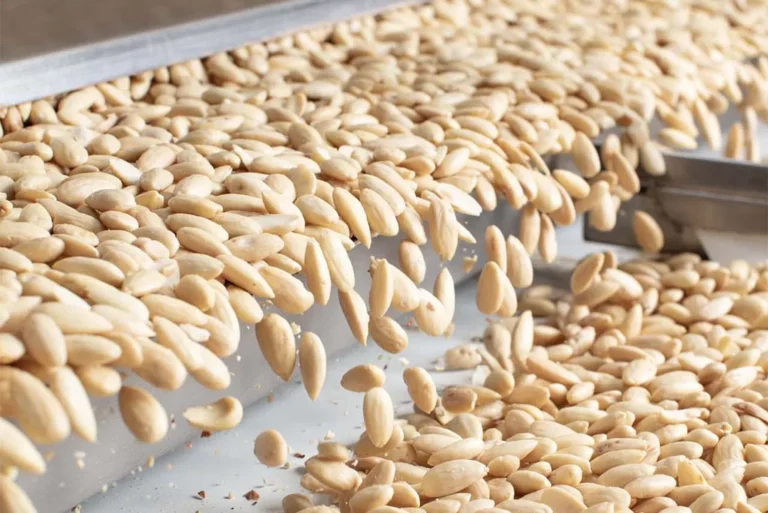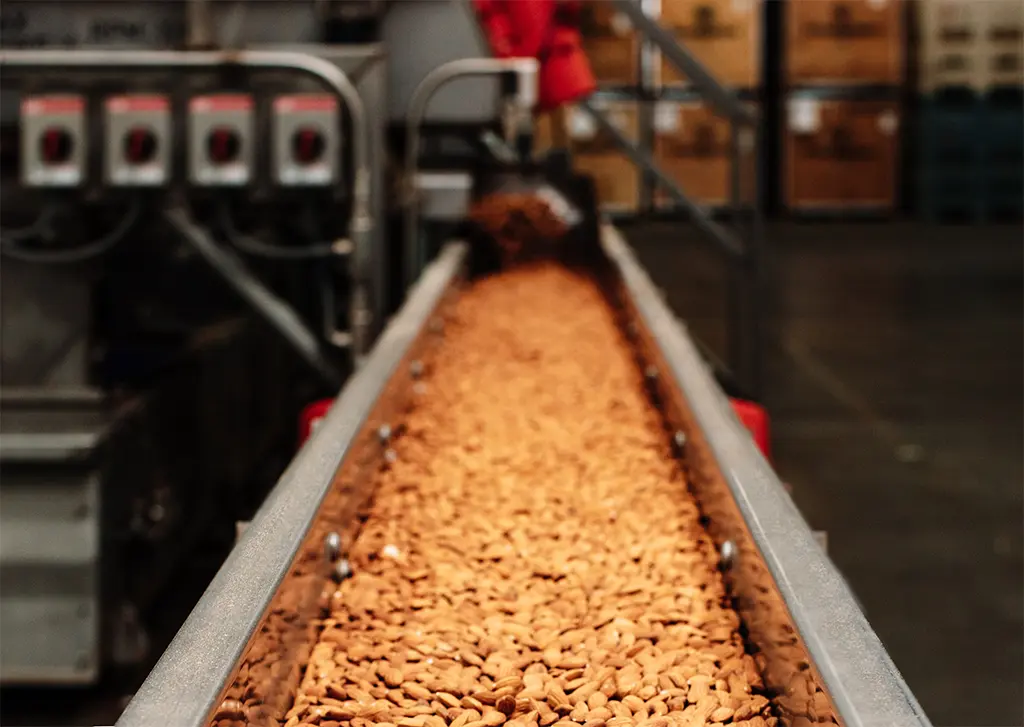Empty cart
Oh no! It appears your cart is empty. Add some almonds to your daily regime with the Treehouse products.
All Blog PostsAlmond Market UpdatesNews

Industry shipments for the second month of the crop year totaled 197.3 million pounds, a 25% increase from August but 7.6% below the same month last year. Exports reached 147.7 million pounds, up 35% month-over-month, while domestic shipments reached 49.5 million pounds, a 2.2% gain.
Despite limited early supply and lingering old-crop constraints, September shipments exceeded expectations. As new-crop availability builds and buyers re-enter the market, the outlook remains stable heading into Q4. However, the latest position report has underscored a widening divide in sentiment between buyers and sellers, both interpreting the same data through very different lenses.
September shipments to India totaled 28.1 million pounds, bringing the year-to-date total to 44.5 million pounds, down 39% from last year. Imports, estimated at roughly 882 containers, were about 20% below trade expectations, creating a tighter supply picture ahead of Diwali and shifting market sentiment from cautious to moderately firm. Retail and e-commerce sales have performed well through the festival period, supported by the government’s GST reduction from 12% to 5% on almonds and other nuts. However, elevated origin pricing and currency weakness have limited the full benefit at the trade level. Local availability remains tight and restocking activity is anticipated post-Diwali, keeping India central to global almond trade momentum through Q4.
Shipments to China, Hong Kong, and Vietnam reached 12.0 million pounds, driven by Vietnam’s 10.6 million pounds, a 139% increase from August. China and Hong Kong combined for 1.4 million pounds, down 86%, reflecting the ongoing shift between direct imports and transshipment routes. Vietnam’s kernel processing and re-export business continues to strengthen regional flow, while China maintains conservative purchasing ahead of Lunar New Year.
European shipments totaled just over 42 million pounds, bringing the year-to-date total to 85.7 million pounds, up 23% versus last year. Spain and Italy led regional growth, with buyers taking advantage of softer pricing to build Q4 coverage. Following the ANUGA trade show, market sentiment has improved, and interest for Q1 and Q2 positions has increased. Still, most European buyers remain disciplined, preferring short-term purchases until more clarity emerges on final crop size. Growers, meanwhile, continue to hold nearby inventory, expecting prices to firm as quality and availability data solidify.
Shipments to the Middle East totaled 31.0 million pounds, down 18.5% versus last September. The region’s strong August performance balanced this decline, leaving year-to-date totals largely unchanged. The earlier Ramadan 2026 timing has pulled forward buying activity, and trade feedback suggests momentum remains steady through October.
Domestic shipments totaled 49.5 million pounds, down 11.5% from the same month last year, marking the eleventh consecutive month of year-over-year declines. Year-to-date domestic movement is off 16.9%, with commitments down 12.6%. Softer consumer spending and evolving retail dynamics, particularly in the snacking segment, continue to shape domestic demand. Buyers remain cautious and focused on short-term purchasing as they monitor broader economic conditions and holiday sell-through rates.
Total commitments stand at 548.9 million pounds, down 17.7% from last year. New sales totaled 219.6 million pounds, including 63.3 million pounds domestic and 156.3 million pounds export. Commitments now total 184.7 million pounds domestically and 364.3 million pounds for export. Although overall coverage remains below prior-year levels, forward sales have improved slightly. Buyers are maintaining a cautious stance, while sellers, buoyed by smaller crop expectations and strong quality metrics, have shown little urgency to extend coverage beyond nearby positions.
Receipts through September totaled 992 million pounds, down 4.2% from the same period last year. Lower Nonpareil yields and slower huller/sheller throughput, caused by higher hull moisture and thicker shells, have contributed to the slower pace. Some higher insect and rain damage has been reported in later-harvested varieties, further dampening final crop yield potential, although overall quality remains improved compared to the 2023 and 2024 crop years.
Early receipts indicate that a 3.0-billion-pound crop is highly unlikely, and even the 2.8-billion-pound Subjective Estimate appears optimistic. Many growers now expect the crop to settle closer to 2.6 billion pounds, with some suggesting 2.5 could be possible. Most harvest operations should conclude by the end of October, with attention turning to incoming California storms and their potential impact on receipts and quality.
The market tone has stabilized following the September position report, though opposing views continue to shape price behavior. Buyers are focused on fundamentals, emphasizing that sales and shipment pace remain subdued, and expecting that pricing may need to soften if momentum doesn’t improve. Many anticipate additional opportunities ahead, particularly if crop receipts continue to build and pressure handlers to move volume.
Sellers and growers, however, remain measured. With receipts lagging and quality trending positive, most see no reason to adjust downward. They highlight that California has consistently shipped between 2.6 and 2.7 billion pounds annually over the past five years—even in slower demand environments—and maintain confidence that long-term consumption will hold steady. While commitments are currently low, sellers expect activity to pick up as buyers step back into the market once near-term uncertainty clears.
This difference in perspective has kept the market cautious and uneven. Buyers who held off ahead of the report now face limited offers, while growers who sold early into September’s brief correction have largely stepped aside. Neither side appears ready to shift course, resulting in continued volatility and thin liquidity.For now, the market remains rangebound but constructive. The outlook for October is supported by renewed demand from India and Europe, tightening fundamentals, and improving confidence in crop quality. Buyers may be disappointed by the limited near-term price relief and will need to decide whether to extend coverage or maintain the current standoff, however, as their stocks dwindle many are realizing they cannot wait any longer. Sellers, meanwhile, are expected to rely on prompt demand to reinforce confidence while clarity on final crop size remains months away.
Be in the loop for vital news about the California almond market.
Enjoy 10% off when you order 6 or more